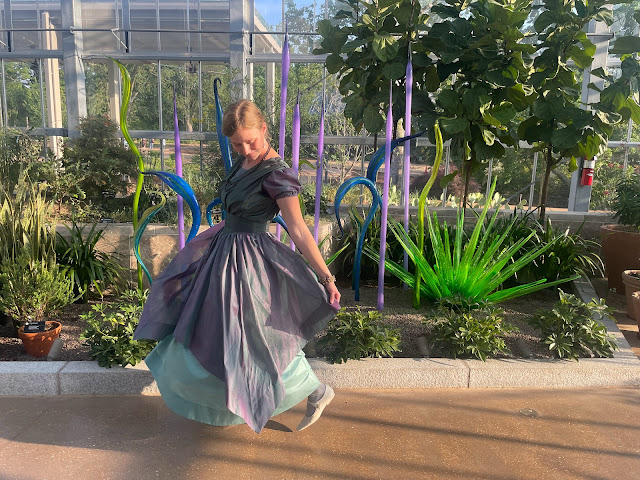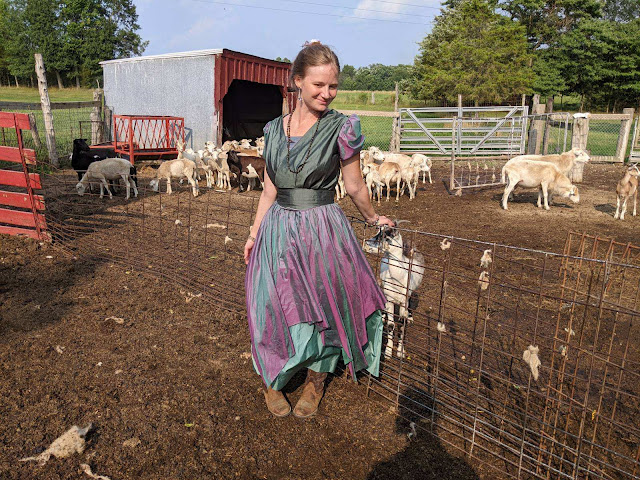After years of dreaming about this dress, I felt like a princess swishing around in it at the botanical gardens.
I have not been good at remembering to take pictures or ask for pictures at events - something I need to change!
Who wouldn't want to get pictures with sheep statues, I ask?
Of course, the Chuhuly glass work that we came to the gardens to see made perfect back drops for fancy dresses!
The Challenge: HSM Look Book - This dress is inspired by the Dreamstress’s “Gather ye Rosebuds” 1916 evening gown. The 1910’s was never an era that particularly interested me until that dress! My dress looks very different, but it never would have happened if I hadn’t been inspired by hers to begin with and started looking into the era more.
Material: Silk shantung for the bodice, silk taffeta for the under skirt, a lightweight changeable silk for the overskirt, cotton sateen for the bodice lining, cotton twill for the belt lining, polished cotton for pockets.
Pattern: I altered the 1918 dinner dress pattern from Vintage Pattern Lending Library for the majority of the dress, and altered McCall’s 8181 for the fitted bodice lining.
Year: 1916
Notions: Cotton twill tape, thread, hooks and eyes, snaps, elastic, a scrap of bias tape.
How historically accurate is it? Material and pattern are good, the construction method not as much. I didn’t have time to really research dress construction for this era and kind of made it up as I went along. I did a lot of zigzagging, and the first home sewing machine with a zigzag stitch wasn’t on the market until the late 1940’s. Along with that my pockets are definitely questionable for the era I believe. So let’s say 60-70% as the overall look (from the outside) is good.
Hours to complete: One solid 10 hour day at the sewing machine, (7am to 5pm, took one small break for lunch) and at least that many hours, plus some, for mocking up, patterning, cutting out, and hand sewing. So around 25 hours more or less, spread out over about a week.
First worn: 6/3/23 to an exhibition at the botanical gardens.
Total cost: This I really don’t know, I bought the bulk of the fabric in Cambodia in 2017 and can’t remember what I paid for it at all (or what the conversion rate was there). The rest of the fabric was stash, left over from previous projects or picked up second hand incredibly cheap. Same with the notions. I won the pattern as a prize several years ago so I paid nothing for that either. Definitely less than $50 usd, most likely considerably lower.




















Still gorgeous! I'm getting interested in the 1900s and 1910s for fashion and the fabric for this is simply gorgeous. I love the wide neck and the waist detail.
ReplyDeleteSuperbe! :-)
ReplyDelete